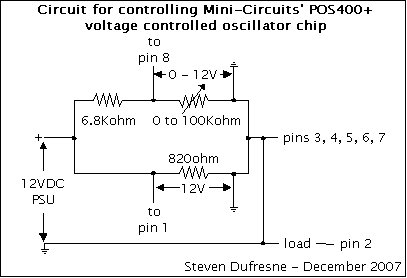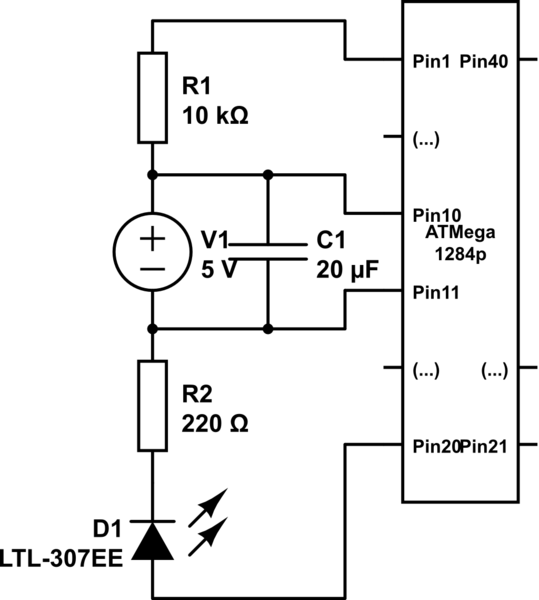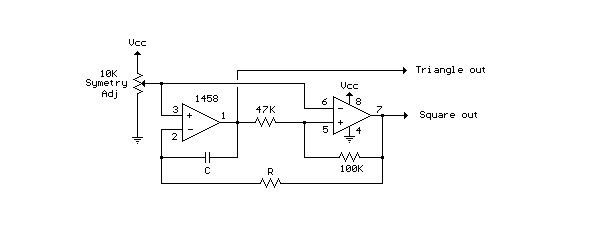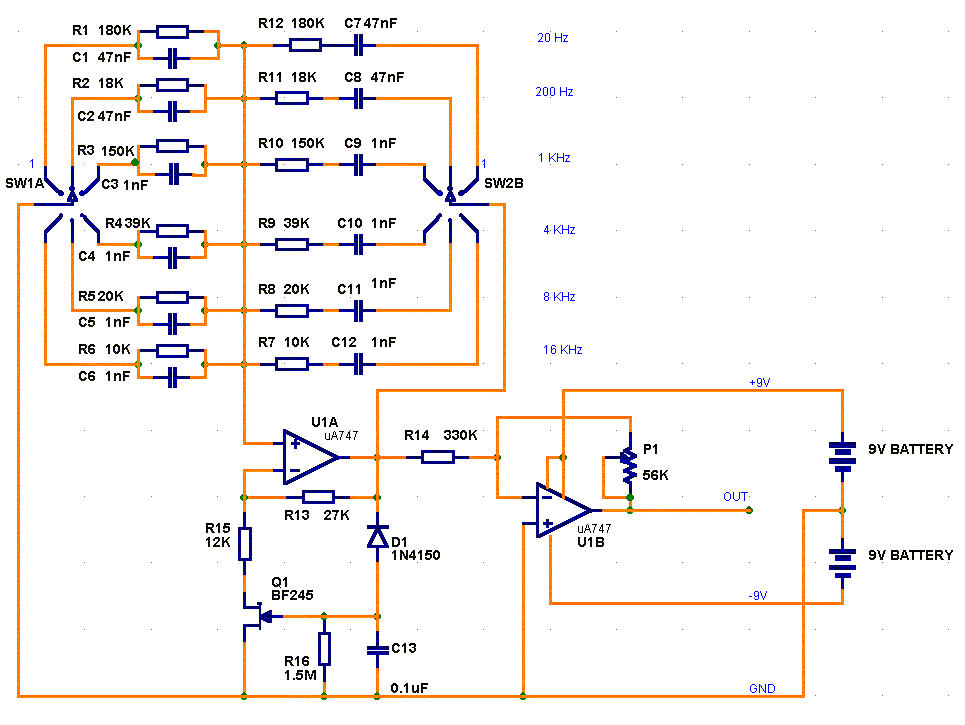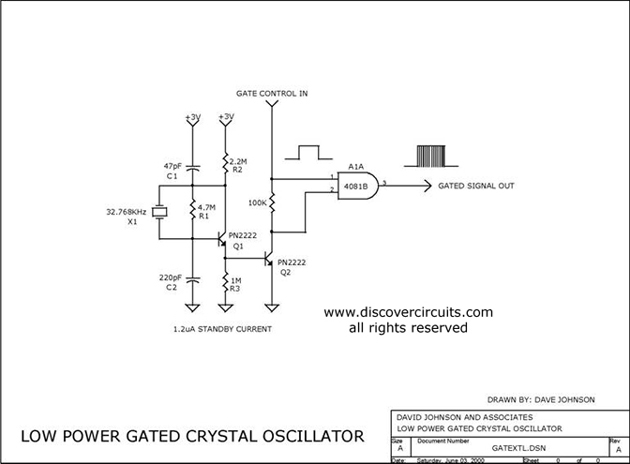
Quadrature Sinewave Oscillator
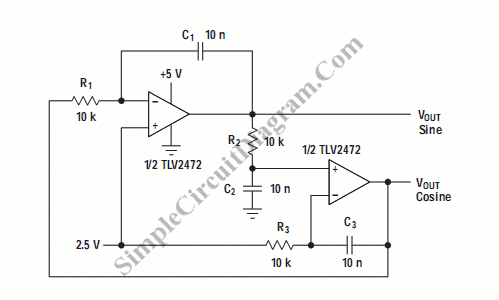
A quadrature oscillator is a type of phase shift oscillator that produces two sine wave signals, with one signal shifted by 90 degrees from the other.
The quadrature oscillator is commonly used in various applications such as signal processing, communications, and control systems. It operates on the principle of generating two sinusoidal outputs that are orthogonal to each other, which is essential for tasks like modulation and demodulation in communication systems.
Typically, a quadrature oscillator circuit may utilize operational amplifiers, resistors, and capacitors to achieve the desired phase shift between the output signals. The operational amplifiers are configured in a feedback loop that stabilizes the oscillation frequency while ensuring that the output signals maintain the required phase relationship.
In a standard configuration, the oscillator consists of two identical RC networks that are connected to the inverting and non-inverting inputs of the operational amplifiers. The phase shift introduced by these RC networks is crucial; each stage of the network contributes to the total phase shift, ultimately resulting in one output signal being delayed by 90 degrees relative to the other.
The frequency of oscillation can be determined by the values of the resistors and capacitors used in the circuit. By adjusting these components, the frequency can be fine-tuned to meet specific application requirements. Additionally, the output signals can be further processed or amplified depending on the intended use.
Overall, the quadrature oscillator serves as a vital component in various electronic systems, providing essential functionality where phase relationship and signal integrity are critical.Quadrature oscillator is another type of phase shift oscillator. This circuit produce two sine wave signal. One of them is shifted 90 degree from the other.. 🔗 External reference
The quadrature oscillator is commonly used in various applications such as signal processing, communications, and control systems. It operates on the principle of generating two sinusoidal outputs that are orthogonal to each other, which is essential for tasks like modulation and demodulation in communication systems.
Typically, a quadrature oscillator circuit may utilize operational amplifiers, resistors, and capacitors to achieve the desired phase shift between the output signals. The operational amplifiers are configured in a feedback loop that stabilizes the oscillation frequency while ensuring that the output signals maintain the required phase relationship.
In a standard configuration, the oscillator consists of two identical RC networks that are connected to the inverting and non-inverting inputs of the operational amplifiers. The phase shift introduced by these RC networks is crucial; each stage of the network contributes to the total phase shift, ultimately resulting in one output signal being delayed by 90 degrees relative to the other.
The frequency of oscillation can be determined by the values of the resistors and capacitors used in the circuit. By adjusting these components, the frequency can be fine-tuned to meet specific application requirements. Additionally, the output signals can be further processed or amplified depending on the intended use.
Overall, the quadrature oscillator serves as a vital component in various electronic systems, providing essential functionality where phase relationship and signal integrity are critical.Quadrature oscillator is another type of phase shift oscillator. This circuit produce two sine wave signal. One of them is shifted 90 degree from the other.. 🔗 External reference

